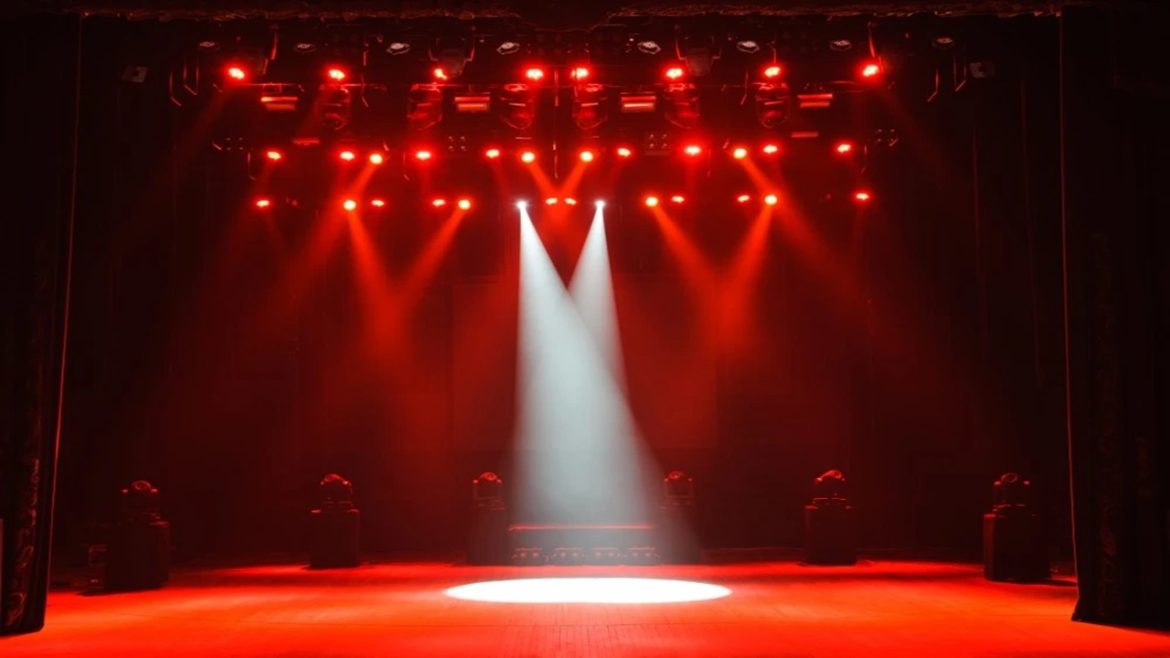PAR lights or Parabolic Aluminized Reflector lights are a very useful instrument in stage lighting which is capable of producing sharp and contrasting effects. These lights are commonly used in concerts, theater performances, and other special occasions since they provide a large number of options to enhance any show It is, therefore, possible to change the outlook of a stage setup by understanding how to use par light properly and engage an audience. Here’s a guide on how to use PAR lights to achieve stunning stage effects.
Choosing the Right Type of PAR Light
To start with the effects, one has to choose the right type of PAR light for the purpose. The size and configuration of PAR lights vary with the need that they are going to serve.
PAR 64
This is the most common size of the PAR lights and provides a strong beam of light with a choice of colors. It is usually applied in concerts or other big-scale performances.
PAR 38
This is a dimmer and less powerful version of the PAR 64 used in smaller events with a soft effect.
LED PAR Light
In recent times, modern PAR lights have been created from LED technology that uses many more colors with high energy efficiency. They are most suitable for generating bright and active effects with the least amount of energy used.
Using PAR Lights for Color Washing
One of the most popular uses of PAR lights is to create color washes across a stage. This technique involves using PAR lights to bathe a large area in a single color or gradient of colors.
Uniform Coverage
To achieve a smooth color wash, position the PAR lights to cover the entire stage area evenly. Beam angle and focus should be changed accordingly to ensure even illumination with no harsh shadows.
Color Mixing
Most PAR lights can be provided with the feature of color mixing. The hues and gradients achieved by such mixing can then be tried out to establish the correct mood or atmosphere for the performance.
Applications
Color washes can be very effective in helping to establish the general tone of performance, moving from one scene to another, or as a background ambiance to complement other lighting effects.
Dramatic Spotlight Effects
PAR lights may be used to create dramatic spotlight effects focusing attention on specific performers or elements on the stage.
Selective Illumination
Use PAR lights to highlight specific areas or performers. Use barn doors or other attachments to create a controlled light spread that only illuminates the desired subject.
Beam Shaping
Shape the beam angle of a PAR unit so it produces a close, tightly focused spotlight. A useful tool in trying to throw attention to a particular individual performer or significant element within the scene.
Applications
Spotlight effects can be used in theatre productions to point out specific actors or in concerts so that a solo artist is highlighted. It can also be used as a focal point for various events.
Creating Depth and Texture on Stage
An application of PAR light can create the depth and texture of the stage effect resulting in a dramatic view.
Backlighting
Mounting PAR lights on the sides of or behind your objects or performers will create silhouettes and depth. This technique helps in adding layers to the visual presentation and can create dramatic effects.
Side Lighting
Use PAR lights positioned to the side of the stage to highlight textures and details. This side lighting can accentuate the contours and features of set pieces or performers, adding dimension to the scene.
Applications
Enhancing stage depth and texture is particularly useful in theater productions and performances where creating a rich and detailed visual environment is essential.
Adjusting for Different Venues and Conditions
Each performance area has its peculiarities and therefore PAR lights must be tuned according to the specific location.
Distance and Positioning
It is recommended to vary the distance and position of PAR lights depending on the size of the stage and the desired outcome. In large halls, one may require a high intensity of light or several lights to achieve the same result as in small halls.
Ambient Lighting
When installing PAR lights, one should consider the amount of light in the venue before installing the lights. For the required lighting effect, higher-intensity PAR lights or additional PAR lights may be needed in well-lit areas.
Applications
One must understand that PAR lights can be installed in different places and therefore, it becomes necessary to control the lights in a way that they give out the right impression in the right place.
Conclusion
PAR lights are one of the most effective instruments that can be used to create powerful and very effective stage effects. Thus, by selecting the appropriate PAR light, using color washing, spotlighting, and deepening the stage, as well as working with other effects, the lighting designers can make any stage an interesting show. It is also necessary to understand how to apply PAR lights to make the performance not only properly illuminated but also interesting to watch for the audience and so the performances are made to be more interesting.
